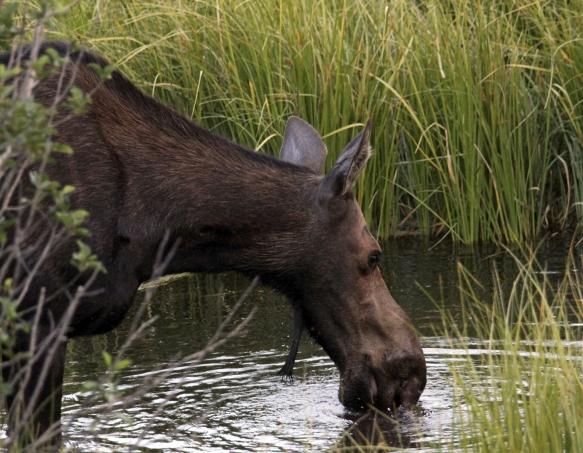Moose are the largest animals in the deer family. Males, or bull moose, are known for their big antlers. They are well-suited to cold environments, with thick fur and long legs that help them move through deep snow and swim well.
Moose have a gestation period of around 8 months, and usually give birth to one or occasionally two calves in the spring. The calves grow quickly and learn to find food within a few weeks, which is important for their survival in the harsh winters.
Moose Sounds
Moose use a wide array of vocalizations for communication, such as:
- During the mating season, bull moose are known to emit bellows, roars, and grunts, with their grunts being audible up to 500 meters away.
- Female moose express their readiness for mating by emitting long, protracted moans, occasionally ending with a cough-like sound.
- To call their offspring, cow moose produce grunting sounds.
- A distinctive high-pitched sound, reminiscent of a creaky door hinge combined with the viscosity of molasses, is made by moose of all ages.
- Young bull moose are often heard whining and whimpering.

Moose Habitat
Moose are known to inhabit northern forests and are particularly fond of areas where the forest meets open land and regions that have experienced recent fires, enriching the growth of shrubs like willow, aspen, and birch. These large animals engage in seasonal migrations, moving between their breeding, mating, and winter habitats. The distances they travel during these migrations can vary widely, ranging from a few miles to as much as 60 miles.

